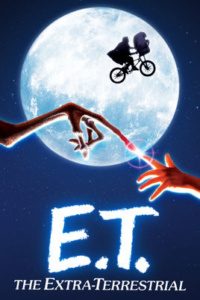The Wild Things Meet E.T.
Listen to the Recess! Clip
| Author | John Cech |
| Air Date | 6/11/2003 |

The Wild Things Meet E.T. Transcript
Brief sound clip
You’re hearing a little from Randolph Wolf’s ballet music for Maurice Sendak’s 1963 Caldecott-award-winning, Where the Wild Things Are — the book that essentially redrew the idea of what a picture book could be. This music dramatizes the moment when Max, dressed in his wolf suit, has been sent to his room for all the mischief he has been making, and he begins to transform his room, through the powers of his fantasy, into a magical place, where he will sail away to visit the monsters that only he can create and only he can tame.
It was Sendak’s seventy-fifth birthday yesterday, and today marks the anniversary of the premier of Steven Spielberg’s 1982 movie, E.T. — which is also about a boy, Elliot, who tames a monster, which also happens to be a child and which has magically appeared in his world — a creature that, at least for awhile, only Elliot can see, and only he can understand because they are, in the end, parts of the same being.
In many ways, E.T. wouldn’t have been possible without Sendak’s break-through vision that reminded us of the power of what we can and do imagine as children, a power that is often lost and dismissed as we become “adulterated,” desperately in need of being, as the psychologist James Hillman put it, “restoried,” reinvested in the imagination. Out of the work of Sendak and Spielberg, and others, came the idea — much derided by the cynics of the time — of staying connected with the “inner child,” that source of vital, creative energy that’s forever being stirred up “in the night kitchen” if we would only wake up and smell the morning cake.
It’s even more urgent for our culture to remember Wild Things and E.T. today, when all around us childhood and children are ignored, underfunded, undefended, and undervalued. But the point of art, of course, is to remind us of these failings and in the process to thaw our frozen hearts. And the point of the child is that he or she is always the weakest, always the smallest, always the most unlikely one to bring about change, healing, hope. And yet, every time he visits us, like some creature from another planet or like the little kid in his wolf suit from down the block, that’s just what he does.